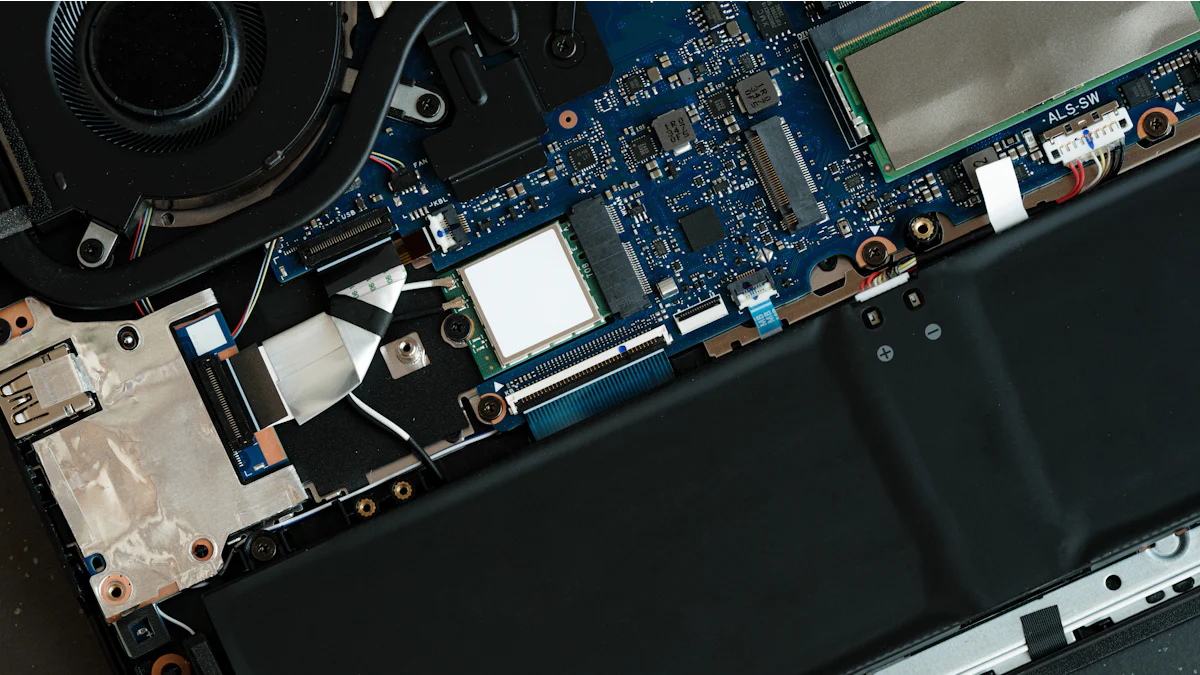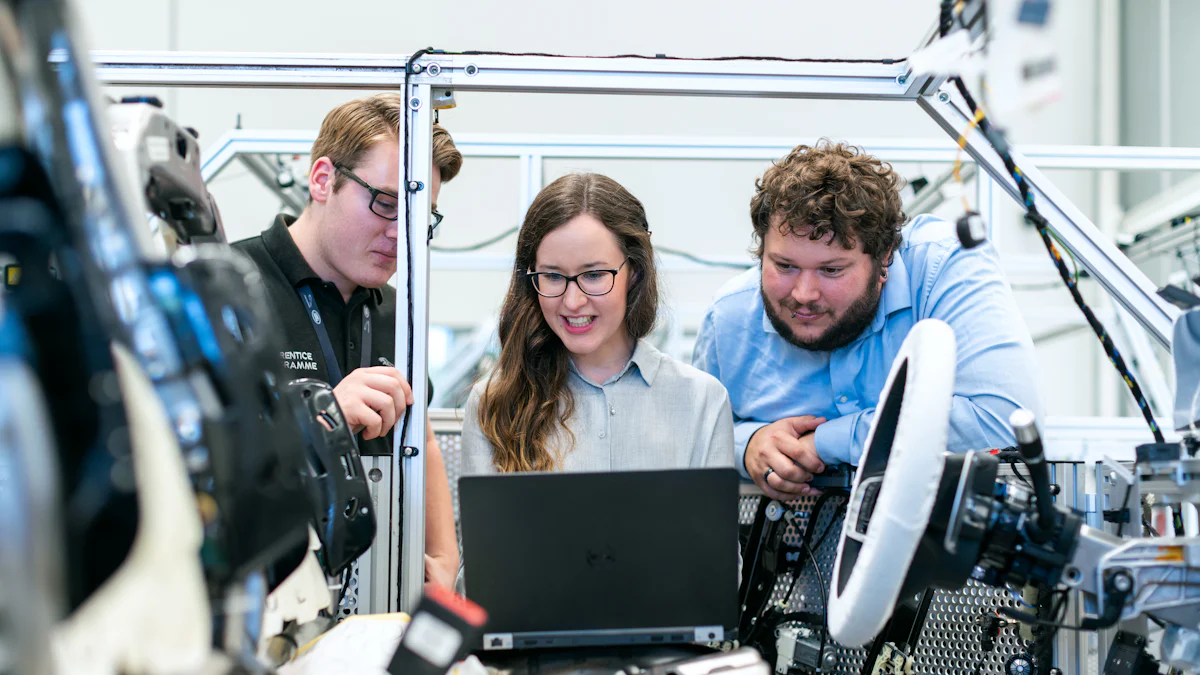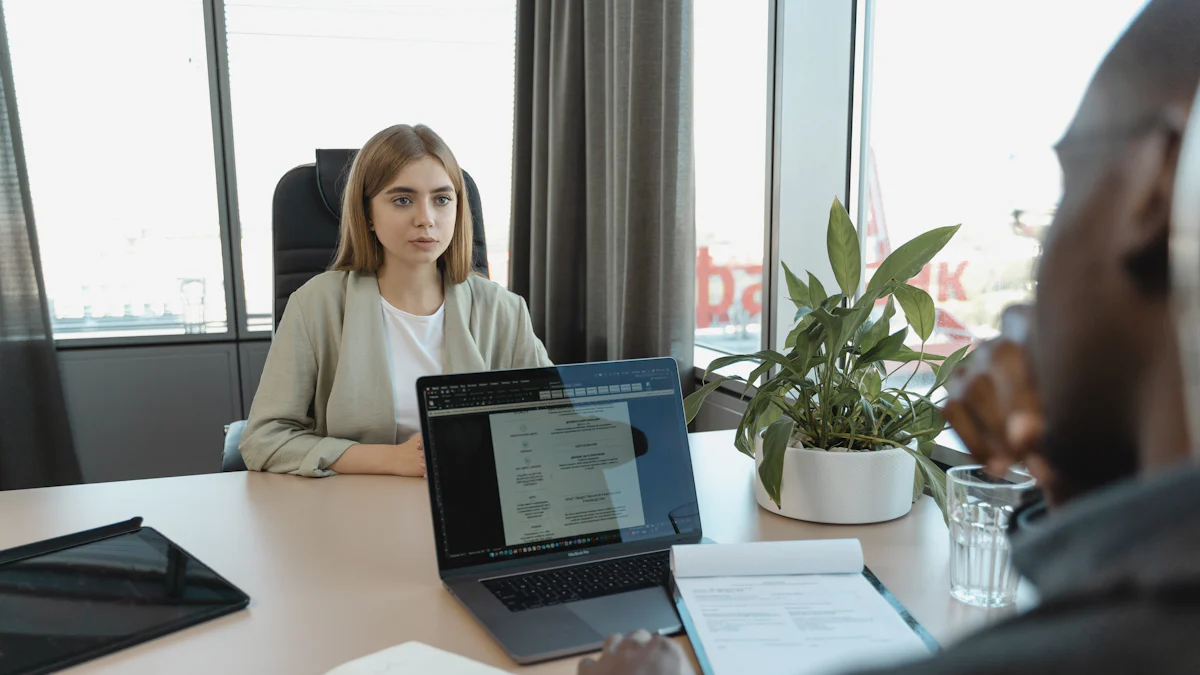How to Prepare for a Thermal Engineering Technical Interview
Try Aihirely for
Smarter Interview Prep
Experience real-time AI support tailored to your Resume.
Boost your confidence and ace every question with
AI Mock Interview.

Image Source: unsplash
Preparation plays a crucial role in succeeding in a thermal engineering technical interview. You need to focus on building a strong foundation in technical concepts while also refining your communication skills. Employers value candidates who can demonstrate both expertise and professionalism. Start by understanding how to study for thermal engineering technical interview topics like thermodynamics and heat transfer. Approach the process with a structured plan to boost your confidence. With the right mindset and preparation, you can showcase your abilities effectively and leave a lasting impression.
Key Takeaways
-
Learn the basics of thermodynamics, heat transfer, and fluids. Use books and websites to improve your knowledge.
-
Find out about the company and its thermal work. Match your skills to what they are looking for.
-
Solve common problems and try practice interviews. This helps you feel ready and confident for the real thing.
-
Think about how you did after the interview. Notice what you did well and what you can do better next time.
-
Write a thank-you email after the interview. Talk about what you discussed to show you care and are professional.
Before the Interview

Image Source: pexels
How to Study for Thermal Engineering Technical Interview
Review thermodynamics, heat transfer, and fluid mechanics.
Start by revisiting the core principles of thermodynamics, heat transfer, and fluid mechanics. These topics form the foundation of thermal engineering. Focus on understanding concepts like conduction, convection, and radiation. Practice solving numerical problems to strengthen your grasp of these subjects. Use textbooks, online tutorials, or video lectures to reinforce your knowledge.
Study real-world applications and case studies in thermal engineering.
Real-world applications often come up in interviews. Familiarize yourself with examples like:
-
Thermometers, which use thermal expansion to measure temperature.
-
Metal bimetallic strips in thermostats, which control heating systems.
-
Expansion joints in bridges, which prevent structural damage due to temperature changes.
These examples help you connect theoretical knowledge to practical scenarios, making your answers more impactful.
Research the Company and Role
Understand the company’s products, services, and industry focus.
Researching the company shows your genuine interest. Learn about their products, services, and the industries they serve. Visit their website, read recent news, and explore their projects. This knowledge helps you tailor your responses to align with their goals.
Identify the role of thermal engineering in the company’s operations.
To understand how thermal engineering fits into the company, focus on key responsibilities. For example:
| Essential Skills and Responsibilities | Description |
|---|---|
| Expertise in Heat Transfer | Analyze and simulate thermal performance |
| Proficiency in Thermal Analysis Tools | Use CFD software, FEA, and heat transfer simulation |
| Collaboration with Cross-Functional Teams | Resolve thermal-related issues effectively |
This insight allows you to highlight relevant skills during the interview.
Practice Problem-Solving and Technical Questions
Solve common thermal engineering problems using online resources and textbooks.
Practice solving problems that test your understanding of thermal engineering concepts. Common questions include:
-
Design a cooling system for a high-performance computer server.
-
Analyze and optimize thermal performance in electronic devices.
These exercises prepare you for technical challenges during the interview.
Engage in mock interviews to simulate real-world scenarios.
Mock interviews are invaluable. They simulate the interview experience, reducing anxiety and boosting confidence. You can refine your responses, ensuring clarity and conciseness. Mock interviews also help you tackle challenging questions in a safe environment, improving your composure under pressure.
Prepare for Behavioral Questions
Reflect on past experiences to answer questions about teamwork and challenges.
Behavioral questions often focus on how you handle teamwork, problem-solving, and challenges. Reflect on your past experiences to prepare for these questions. Think about situations where you collaborated with others, resolved conflicts, or overcame obstacles. For example, you might discuss a time when you worked with a team to meet a tight project deadline or solved a technical issue under pressure.
When preparing, focus on examples that highlight your ability to communicate, adapt, and contribute effectively. Interviewers want to see how you apply your skills in real-world scenarios. Avoid vague responses. Instead, provide specific details about your role and the impact of your actions. This approach demonstrates your ability to think critically and work well with others.
Use the STAR method (Situation, Task, Action, Result) for structured responses.
The STAR method is a powerful tool for answering behavioral questions. It helps you organize your thoughts and deliver clear, concise responses. Here’s how you can apply it effectively:
-
Situation (20%): Start by describing the context of your example. Keep it brief and relevant to the question.
-
Task (10%): Explain your responsibility or the goal you aimed to achieve.
-
Action (60%): Focus on the specific steps you took to address the situation. Highlight skills that are relevant to thermal engineering, such as analytical thinking or problem-solving.
-
Result (10%): Share the outcome of your actions. Emphasize measurable results, such as improved efficiency or successful project completion.
For instance, if asked about a challenge you faced, you could describe a situation where you optimized a heat exchanger design to improve energy efficiency. Explain the task, detail the steps you took to analyze and implement changes, and conclude with the positive results, such as reduced energy consumption.
Using the STAR method ensures your answers are structured and impactful. It also helps you stay focused, making it easier to communicate your experiences confidently. As you prepare for your interview, combine this method with your technical preparation, such as how to study for thermal engineering technical interview topics, to create well-rounded responses.
During the Interview

Image Source: pexels
Demonstrate Technical Expertise
Clearly explain your thought process when solving problems.
During the interview, focus on explaining your thought process step by step. When presented with a technical question, start by identifying the problem and outlining your approach. For example, if asked to design a cooling system, describe how you would analyze heat transfer requirements, select materials, and evaluate performance. This demonstrates your ability to think critically and solve problems systematically.
Use diagrams or equations to support your answers when appropriate.
Visual aids like diagrams or equations can make your explanations more effective. If asked about heat transfer, sketch a simple diagram to illustrate conduction, convection, or radiation. Use equations to show how you calculate thermal resistance or heat flux. These tools help you communicate complex ideas clearly and leave a strong impression on the interviewer.
Showcase Communication and Soft Skills
Communicate clearly and confidently.
Effective communication is key during the interview. Speak clearly and at a moderate pace. Use a confident tone to convey your expertise. Avoid using overly technical jargon unless necessary, and ensure your answers are concise and easy to follow.
Actively listen to the interviewer’s questions and respond thoughtfully.
Active listening shows respect and attentiveness. Pay close attention to the interviewer’s questions and ask for clarification if needed. Use nonverbal cues like maintaining eye contact and nodding to show engagement. Thoughtful responses demonstrate your ability to process information and provide meaningful answers.
Tip: Practice active listening during mock interviews by focusing on the interviewer’s words, maintaining good posture, and using appropriate gestures.
Ask Insightful Questions
Inquire about the company’s projects and challenges in thermal engineering.
Asking insightful questions shows your genuine interest in the role. For example, you could ask:
-
What are some common challenges in thermal management for large data centers, and how does the company address them?
-
How does the team approach thermal simulations or computational fluid dynamics (CFD) analysis for product design?
-
Can you share an example of a challenging thermal problem the company has solved recently?
These questions highlight your curiosity and understanding of the field.
Show genuine interest in the role and the team.
Express enthusiasm for the opportunity to contribute to the company’s goals. Ask about the team’s dynamics, ongoing projects, or future plans. This demonstrates your eagerness to collaborate and grow within the organization.
Note: Thoughtful questions not only provide valuable insights but also help you stand out as a proactive and engaged candidate.
After the Interview
Reflect and Learn
Identify areas where you excelled and areas for improvement.
Reflection is a critical step after any interview. It helps you identify what went well and where you can improve. Use these steps to guide your reflection:
-
Immediate Reflection: Write down your thoughts right after the interview. Capture your initial impressions while they are fresh.
-
Review Your Preparation: Assess how well your preparation matched the interview’s demands.
-
Feedback Analysis: If you received feedback, use it to pinpoint areas for growth.
-
Question-Specific Analysis: Break down your responses to specific questions. Identify which answers were strong and which could be improved.
-
Behavior and Body Language: Reflect on your non-verbal communication. Consider your posture, eye contact, and tone of voice.
-
Stress Management: Evaluate how you handled stress and anxiety during the interview.
This process helps you build on your strengths and address weaknesses for future opportunities.
Take notes on the questions asked for future reference.
Taking notes on the questions asked during the interview is invaluable. These notes help you:
-
Retain critical details about the interview.
-
Prepare more effectively for future interviews by reviewing the types of questions asked.
-
Focus on observable behaviors and facts, avoiding biases in your self-assessment.
Expand on your notes after the interview to ensure you capture all important details. This habit will make your preparation more targeted and efficient.
Send a Thank-You Email
Express gratitude for the opportunity and reiterate your interest in the role.
A thank-you email is a professional way to leave a positive impression. Include these key elements:
-
Subject Line: Keep it clear and professional, such as “Thank You for the Opportunity.”
-
Greeting: Address the interviewer by name.
-
Body: Thank them for the opportunity, express your enthusiasm for the role, and add a personal touch.
-
Sign-Off: Use a respectful closing, such as “Best regards” or “Sincerely.”
Mention specific points discussed during the interview to personalize the message.
Personalizing your thank-you email shows genuine interest. Reference specific topics or moments from the interview. For example:
-
Highlight a part of the role that excites you.
-
Share how the company’s values align with yours.
“I was really struck by the collaborative atmosphere of your team and the innovative approach to thermal management challenges. It aligns perfectly with my passion for solving complex engineering problems.”
This level of detail demonstrates that you paid attention and are genuinely excited about the opportunity.
Follow Up Professionally
Respect the timeline provided by the interviewer for feedback.
If the interviewer mentioned a timeline for feedback, wait until that period has passed before following up. Respecting their timeline shows professionalism and patience.
Politely inquire about the status of your application if no response is received.
If you do not hear back after the expected timeline, send a polite follow-up email. Keep it concise and professional. For example:
-
Reiterate your interest in the role.
-
Politely ask if there are any updates regarding your application.
This approach keeps you on the interviewer’s radar without appearing pushy.
Tip: Always maintain a positive tone in your follow-up communication. It reflects your professionalism and enthusiasm for the role.
Preparing for a thermal engineering technical interview requires focus and strategy. Follow these key steps to maximize your chances of success:
-
Prepare for Technical Topics: Master core concepts, formulas, and real-world applications of thermal management.
-
Discuss Past Projects: Share examples where you solved thermal challenges or applied innovative design techniques.
-
Demonstrate Googleyness: Highlight traits like curiosity, collaboration, and problem-solving through your experiences.
Approach the interview with confidence and a positive mindset. Your preparation and professionalism will set you apart and help you achieve your career goals.
FAQ
What are the most common technical questions in a thermal engineering interview?
You can expect questions on heat transfer, thermodynamics, and fluid mechanics. For example:
-
Explain the modes of heat transfer.
-
How do you calculate thermal resistance?
-
Describe the working principle of a heat exchanger.
Tip: Practice solving these problems to build confidence.
How can I prepare for unexpected questions during the interview?
Focus on understanding the fundamentals. If you encounter an unfamiliar question, explain your thought process. Break the problem into smaller parts and apply basic principles.
Note: Interviewers value your problem-solving approach more than the final answer.
Should I bring any materials to the interview?
Carry a notebook, pen, and copies of your resume. You can also bring a portfolio showcasing your projects or designs related to thermal engineering.
Pro Tip: Use the notebook to sketch diagrams or jot down key points during the discussion.
How do I handle behavioral questions if I lack work experience?
Use examples from academic projects, internships, or group activities. Highlight your teamwork, problem-solving, and leadership skills.
Example: “During my senior project, I led a team to design a thermal management system, ensuring we met deadlines and solved technical challenges.”
What should I wear to a thermal engineering interview?
Choose professional attire, such as a suit or business casual clothing. Ensure your outfit is clean and well-fitted.
Reminder: First impressions matter. Dressing professionally shows respect for the opportunity.
